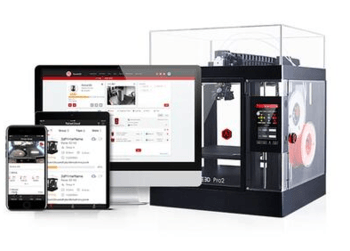Hello, and welcome to the exciting world of 3D printing! This process involves bringing a digital design to life by creating a three-dimensional object. To start, a 3D model is created using computer-aided design (CAD) software. The model is then divided into thin layers, which are printed one at a time and fused together to form the final object. It’s amazing what can be achieved with this technology!

The process of 3D printing is highly versatile and can be utilized to create a vast array of objects, ranging from prototypes to finished products. It has found applications in multiple industries, including manufacturing, healthcare, and aerospace. Furthermore, 3D printing has gained immense popularity for personal use, as it enables individuals to produce custom objects tailored to their specific requirements.
There are many different types of 3D printers available, each with its own strengths and weaknesses. The type of printer you choose will depend on the size and complexity of the objects you want to create.
3D printing is a rapidly evolving technology, and new developments are happening all the time. As technology continues to improve, 3D printing is becoming more affordable and accessible to everyone.
This is opening up a world of possibilities for the future of manufacturing and design.
There are several types of 3D printers, each with its own strengths and weaknesses. The most common types include Fused Filament Fabrication (FFF) printers that use a heated nozzle to melt thermoplastic filament, which is then deposited layer by layer to create the object.
Stereolithography (SLA) printers use a laser to cure liquid resin, which is then hardened layer by layer to create the object. Selective Laser Sintering (SLS) printers, on the other hand, use a laser to fuse powdered material, which is then sintered layer by layer to create the object.
FFF printers are the most affordable type of 3D printer, and they are relatively easy to use. However, they are not as precise as other types of 3D printers. And they are not suitable for printing objects with complex geometries.
SLA printers are more precise than FFF printers and are suitable for printing objects with complex geometries. However, they are more expensive than FFF printers, and they require more expertise to use.
SLS printers are the most precise type of 3D printer, and they are suitable for printing objects with complex geometries. However, they are the most expensive type of 3D printer, and they require the most expertise to use.
When choosing a 3D printer, it is important to consider the following factors:
- The type of material you want to print with. Not all 3D printers can print with all materials.
- The size of the objects you want to print. Some 3D printers have a limited build volume, which means that they can only print objects of a certain size.
- Your budget. 3D printers range in price from a few hundred dollars to several thousand dollars.
- Your level of expertise. Some 3D printers are easier to use than others.
There are many materials that can be used in 3D printing, and each printer type may have its own requirements. Yes, that is correct. Many different materials can be used in 3D printing, and each printer type has its own requirements. Some of the most common materials used in 3D printing include:
* *Thermoplastics* are a type of plastic that can be melted and then cooled to create a solid object. Thermoplastics are the most common type of material used in 3D printing, and they are available in a wide variety of colors and properties.
* *Resins* are a type of liquid material that can be hardened using a light source. Resins are often used for printing objects with complex geometries, and they are available in a wide variety of colors and properties.
* *Powders* are a type of material that can be fused together using a heat source. Powders are often used for printing objects with high strength and durability, and they are available in a wide variety of materials, including metals, ceramics, and plastics.
The type of material you can use with a 3D printer will depend on your specific printer. Some printers are only compatible with certain materials, so checking the manufacturer’s specifications before purchasing a printer is essential.
Additional details about each type of material:
*Thermoplastics are plastic that can be melted and then cooled to create a solid object. Thermoplastics are the most common type of material used in 3D printing, and they are available in various colors and properties. Some common thermoplastics include:
* Acrylonitrile butadiene styrene (ABS) is a strong and durable material often used to print functional objects.
* Polylactic acid (PLA) is a more affordable and eco-friendly material that is often used for printing prototypes and models.
* Polyethylene terephthalate glycol (PETG) is a strong and transparent material often used to print food-safe objects.
* Resins are a type of liquid material that can be hardened using a light source. Resins are often used for printing objects with complex geometries, and they are available in a wide variety of colors and properties. Some common resins include:
* Stereolithography (SLA) resins are a type of resin that is cured using a laser. SLA resins are often used for printing high-resolution objects with smooth surfaces.
* Digital light processing (DLP) resins are a type of resin that is cured using a projector. DLP resins are often used for printing large objects at high speed.
* Material jetting (MJ) resins are a type of resin that is deposited layer by layer using a print head. MJ resins are often used for printing objects with complex geometries and high resolution.
* Powders are a type of material that can be fused together using a heat source. Powders are often used for printing objects with high strength and durability, and they are available in a wide variety of materials, including metals, ceramics, and plastics. Some standard powders include:
* Metal powders are often used for printing objects with high strength and durability. Metal powders are available in various metals, including steel, aluminum, and titanium.
* Ceramic powders are often used for printing objects with high strength and heat resistance. Ceramic powders are available in a wide variety of ceramics, including porcelain, stoneware, and earthenware.
* Plastic powders are often used for printing objects with low cost and high speed. Plastic powders are available in a wide variety of plastics, including ABS, PLA, and PETG.
Buy a 3D printer, and get free gifts.
I hope this information helps you to choose the right material for your 3D printing project.
Thanks,
Bullwinkle


